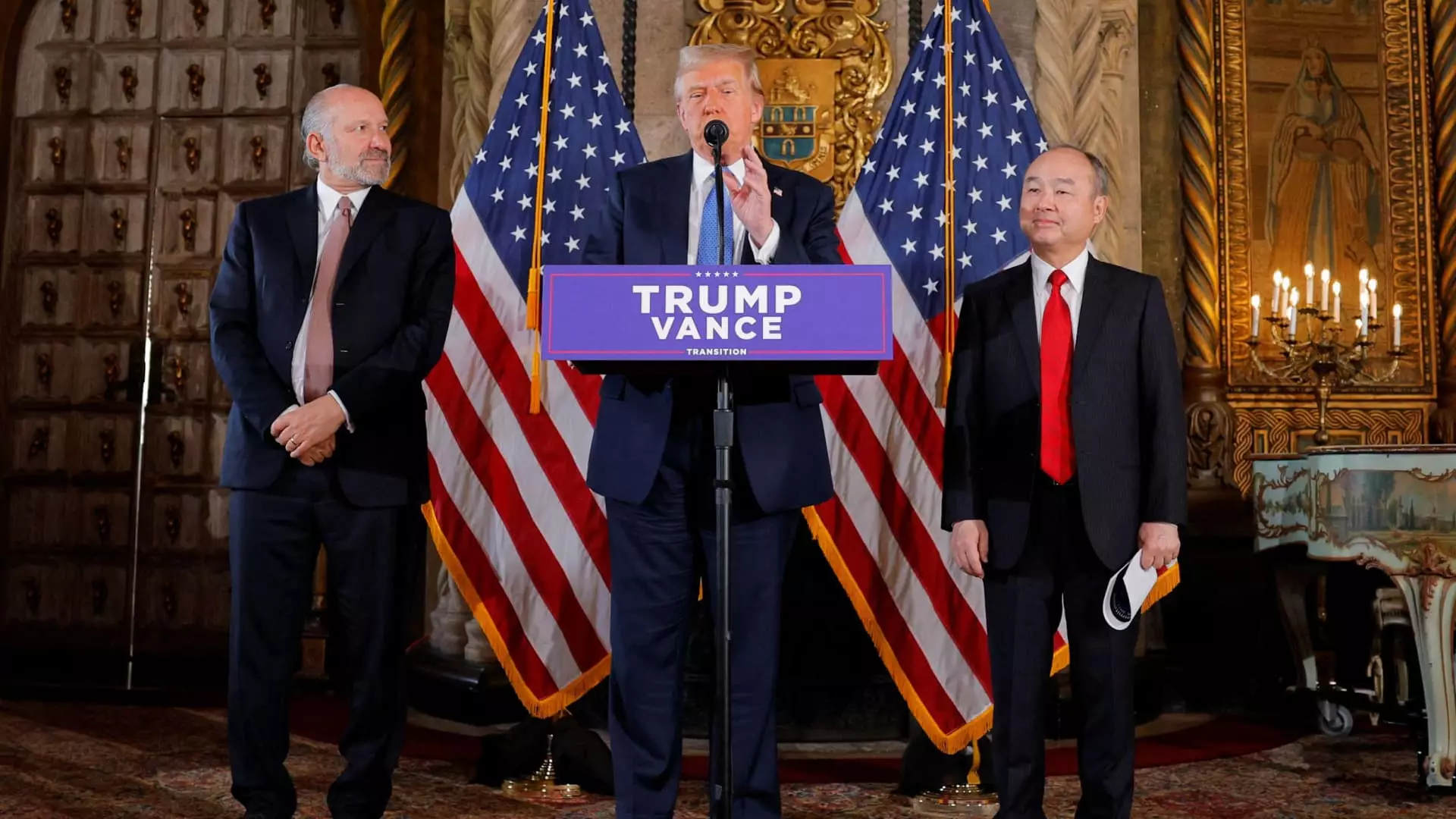The recent announcement made by SoftBank CEO Masayoshi Son marks a significant financial commitment to the United States, with a staggering $100 billion allocated over the next four years. This investment is particularly noteworthy as it aligns with a turbulent economic landscape and an unpredictable political climate. The announcement, made during Son’s meeting with President-elect Donald Trump at Mar-a-Lago, signals a bold move to bolster the U.S. economy amid discussions of technological leadership, especially in artificial intelligence (AI). The promise to create at least 100,000 jobs demonstrates not only a commitment to economic growth but also suggests an emphasis on advanced technologies as integral to the country’s future.
Past Investments and Strategic Growth
Son’s past investment strategies provide context to his current plans. In 2016, after Trump’s election victory, SoftBank pledged $50 billion with the goal of generating 50,000 jobs, indicating a pattern of substantial investments that accompany changing political leadership. Such repetition highlights SoftBank’s approach of leveraging political relationships to enhance its influence in global markets. Beyond mere job creation, the goal of positioning the U.S. as a leader in transformative technologies plays into broader strategic frameworks for both SoftBank and the American economy. The historical context revolving around SoftBank’s investments reveals a trend where economic policy and investment strategy converge.
The focus on artificial intelligence and related infrastructure in SoftBank’s latest initiative underscores the growing significance of emerging technologies in the global economy. Given the rapid advancements in AI, this move could position the U.S. as a hub for innovation that leads to new products, services, and industries. This tech-centric investment is crucial, particularly as countries worldwide scramble to secure their place in the digital economy. Trump’s description of the investment as a “monumental demonstration of confidence” reflects not just local effects but a global message about the United States’ commitment to leading the technological forefront, potentially attracting further investments from other firms as well.
Understanding where the funds will originate offers further insights into SoftBank’s strategic planning. The investment could leverage resources from SoftBank’s Vision Fund, known for its vast capital from various international sources. This multifaceted approach to funding means that some capital may already exist rather than being generated anew, integrating past funding initiatives into future goals. Notably, SoftBank’s commitment to AI is exemplified by its recent investment in OpenAI, showcasing its proactive stance on harnessing technological advancements. The implication here is that SoftBank intends to create a robust eco-system that supports not just job creation but also fosters collaboration and innovation.
Masayoshi Son’s announcement serves as a clarion call for transformative change centered around technology and job creation in the U.S. economy. It reflects not merely an investment but a vision aligned with political and economic aspirations that could reinforce the U.S.’s position in the global tech landscape. SoftBank’s strategic placement of funds in innovation-heavy projects promises not just immediate job creation but positions the country to capture the benefits of AI and other technological advancements. As we observe the unfolding of these investments, it will be fascinating to examine their long-term impact on both the U.S. economy and the global tech industry.

